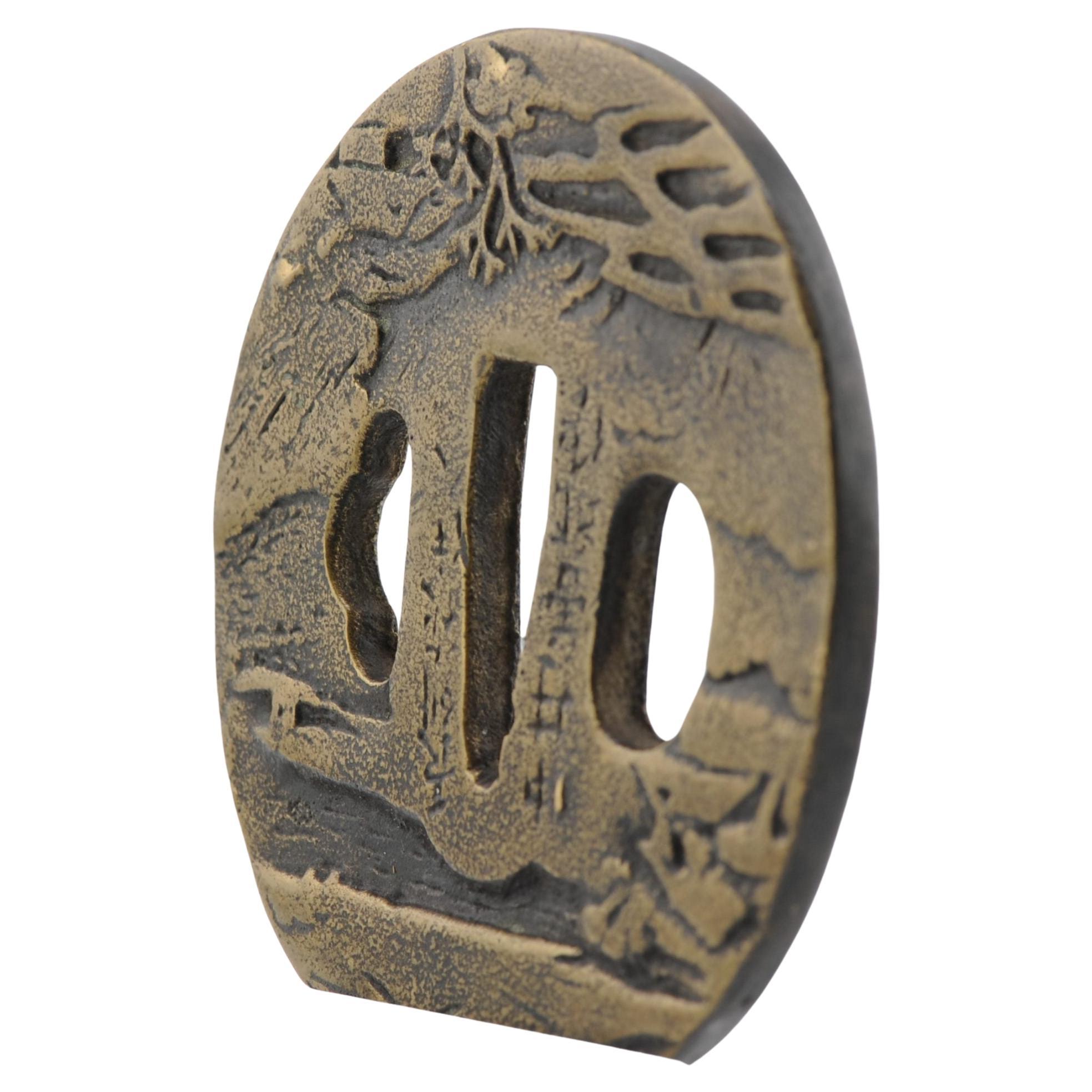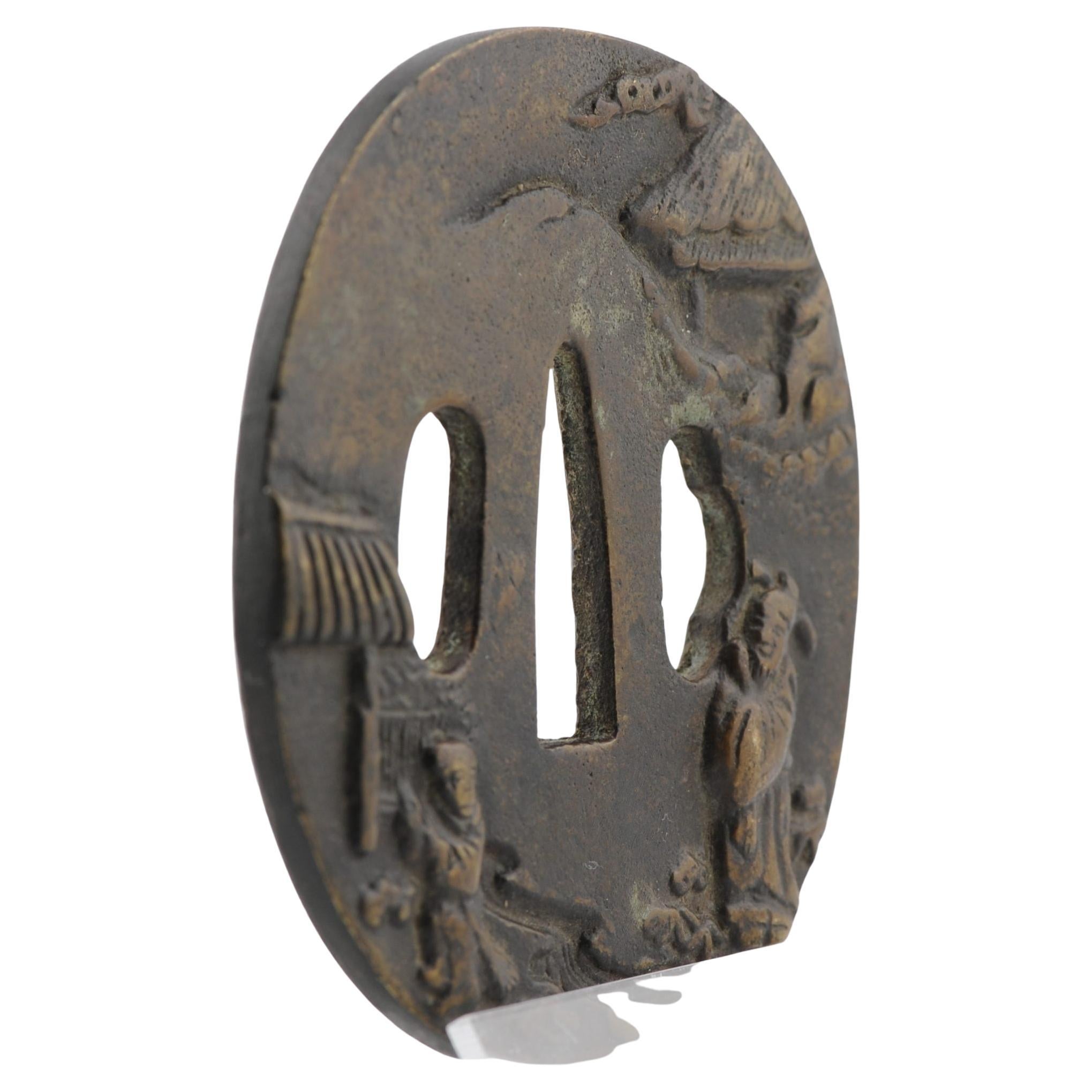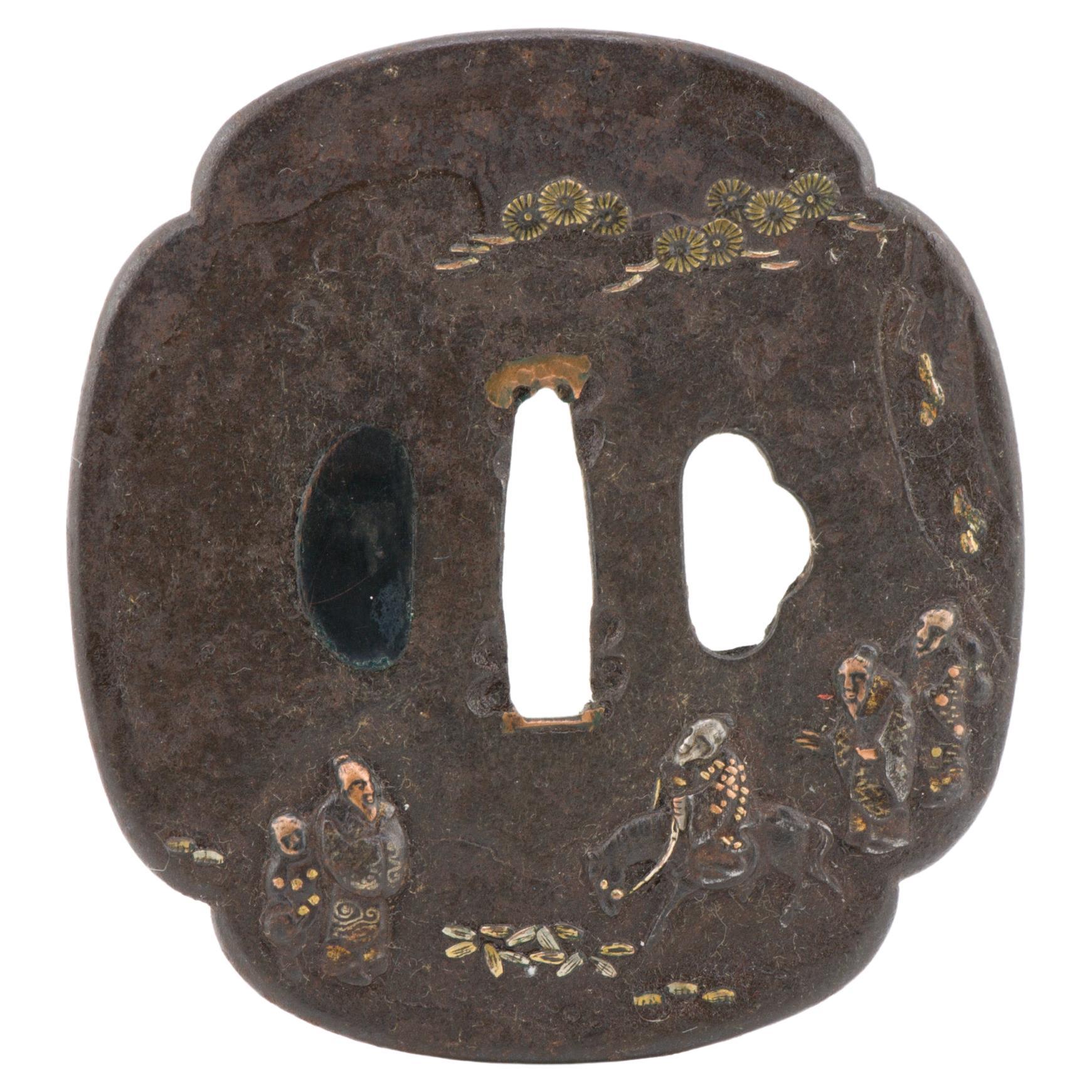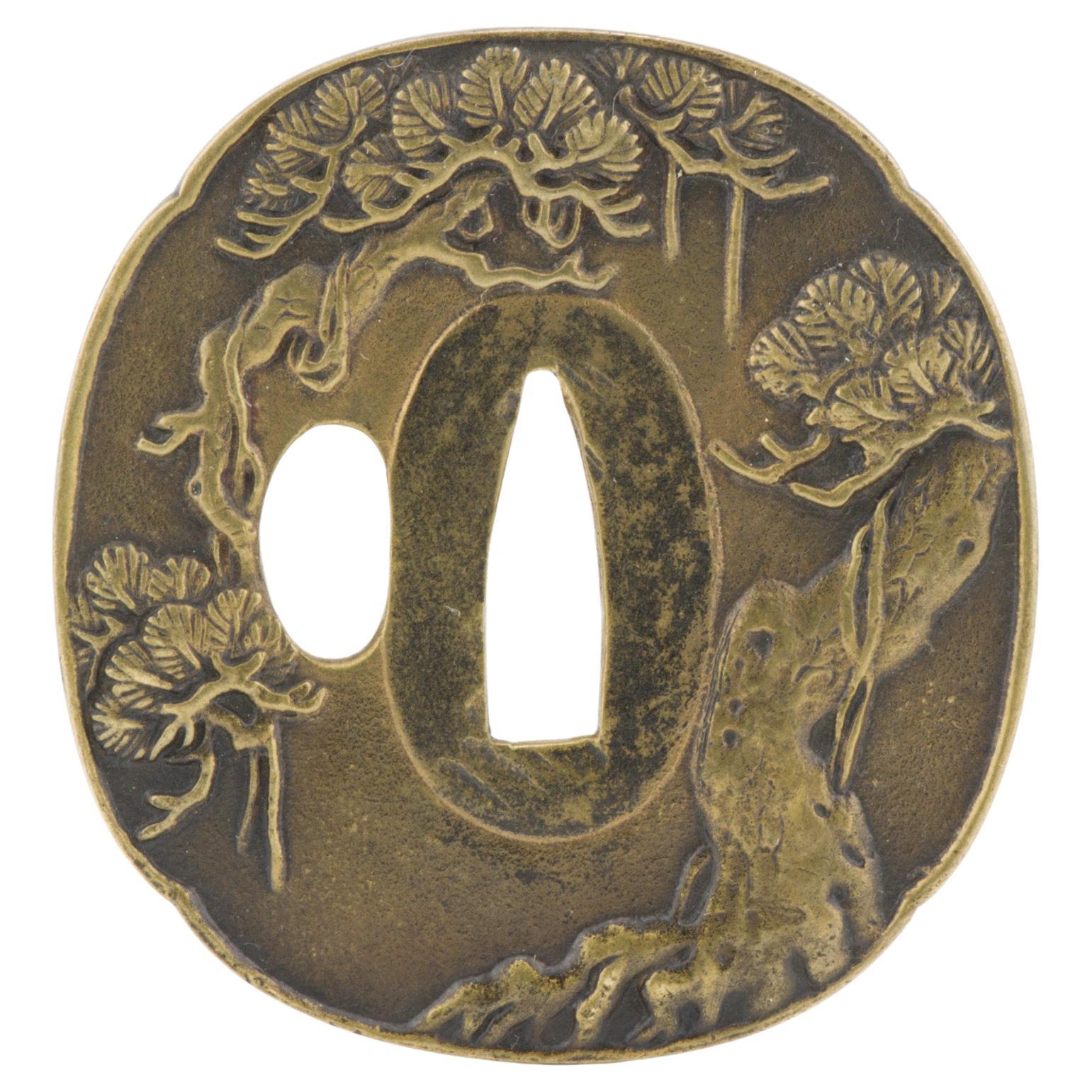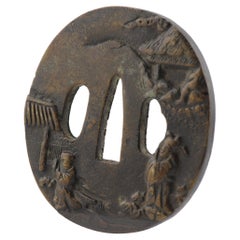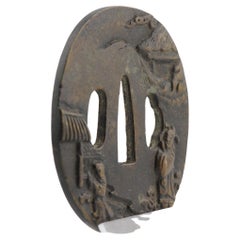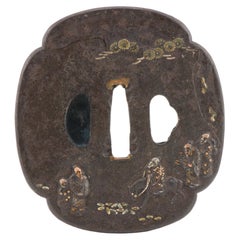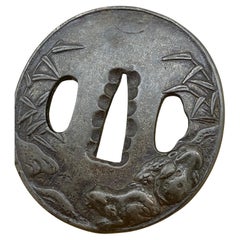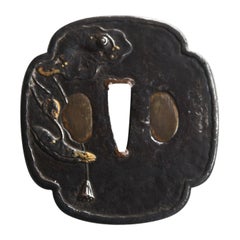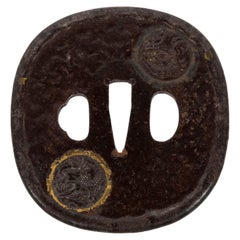Items Similar to Antique Metal Japanese Tsuba Tosogu with Buddhist Literati in Landscape
Want more images or videos?
Request additional images or videos from the seller
1 of 5
Antique Metal Japanese Tsuba Tosogu with Buddhist Literati in Landscape
$2,126.29
£1,591.58
€1,803
CA$2,926.38
A$3,261.76
CHF 1,711.33
MX$39,831.41
NOK 21,669.20
SEK 20,480.69
DKK 13,725.71
About the Item
Nicely made Tsuba. The piece is unmarked. Dating to the Edo period
Provenance: Collected in the 1920’s. Thence by decent
A Tsuba is a Japanese sword mountings are the various housings and associated fittings (tosogu)[1] that hold the blade of a Japanese sword when it is being worn or stored. Koshirae (拵え) refers to the ornate mountings of a Japanese sword (e.g. katana) used when the sword blade is being worn by its owner, whereas the shirasaya is a plain undecorated wooden mounting composed of a saya and tsuka that the sword blade is stored in when not being used.
Additional information:
Material: Bronze & Metal
Primary Material: Bronze & Cloisonne
Region of Origin: Japan
Period: 19th century
Japan Dynasty Period: Edo Period (1603–1867), Meiji Period (1867-1912)
- Style:Edo (Of the Period)
- Materials and Techniques:
- Place of Origin:
- Period:
- Date of Manufacture:19th Century
- Condition:
- Seller Location:Amsterdam, NL
- Reference Number:Seller: 1458529798991stDibs: LU4863242701662
About the Seller
5.0
Platinum Seller
Premium sellers with a 4.7+ rating and 24-hour response times
Established in 2015
1stDibs seller since 2019
264 sales on 1stDibs
Typical response time: 2 hours
- ShippingRetrieving quote...Shipping from: Amsterdam, Netherlands
- Return Policy
Authenticity Guarantee
In the unlikely event there’s an issue with an item’s authenticity, contact us within 1 year for a full refund. DetailsMoney-Back Guarantee
If your item is not as described, is damaged in transit, or does not arrive, contact us within 7 days for a full refund. Details24-Hour Cancellation
You have a 24-hour grace period in which to reconsider your purchase, with no questions asked.Vetted Professional Sellers
Our world-class sellers must adhere to strict standards for service and quality, maintaining the integrity of our listings.Price-Match Guarantee
If you find that a seller listed the same item for a lower price elsewhere, we’ll match it.Trusted Global Delivery
Our best-in-class carrier network provides specialized shipping options worldwide, including custom delivery.More From This Seller
View AllAntique Metal Japanese Tsuba Tosogu with Buddhist Literati in Landscape, 19th C
Located in Amsterdam, Noord Holland
Nicely made Tsuba. The piece is unmarked. Dating to the Edo period
Provenance: Collected in the 1920’s. Thence by decent
A Tsuba is a Japanese sword mountings are the various housi...
Category
Antique 19th Century Japanese Edo Arms, Armor and Weapons
Materials
Bronze
Antique Metal Japanese Tsuba Tosogu with Buddhist Literati in Landscape
Located in Amsterdam, Noord Holland
Nicely made Tsuba. The piece is unmarked. Dating to the Edo period
Provenance: Collected in the 1920's. Thence by decent
A Tsuba is a Japanese sword mountings are the various housi...
Category
Antique 19th Century Japanese Edo Ceramics
Materials
Metal, Bronze
$1,101 Sale Price
20% Off
Antique Metal Japanese Tsuba Tosogu with Buddhist Literati in Landscape
Located in Amsterdam, Noord Holland
Nicely made Tsuba. The piece is unmarked. Dating to the Edo period
Provenance: Collected in the 1920's. Thence by decent
A Tsuba is a Japanese sword mountings are the various housi...
Category
Antique 19th Century Japanese Edo Ceramics
Materials
Metal, Bronze
$1,101 Sale Price
20% Off
Antique Metal Japanese Tsuba Tosogu with Scholars Travelling in Landscape
Located in Amsterdam, Noord Holland
Nicely made Tsuba. The piece is unmarked. Dating to the Edo period
Provenance: Collected in the 1920’s. Thence by decent
A Tsuba is a Japanese sword mountings are the various housi...
Category
Antique 19th Century Edo Arms, Armor and Weapons
Materials
Bronze
$1,701 Sale Price
20% Off
Antique Metal Japanese Tsuba Tosogu with Chinese Coins, 19th Century
Located in Amsterdam, Noord Holland
Nicely made Tsuba. The piece is unmarked. Dating to the Edo period
Provenance: Collected in the 1920’s. Thence by decent
A Tsuba is a Japanese sword mountings are the various housi...
Category
Antique 19th Century Japanese Edo Arms, Armor and Weapons
Materials
Bronze
Antique Metal Japanese Tsuba Tosogu with Pine tree. Top quality
Located in Amsterdam, Noord Holland
Nicely made Tsuba. The piece is unmarked. Dating to the Edo or Meiji period
A Tsuba is a Japanese sword mountings are the various housings and associated fittings (tosogu) that hold...
Category
Antique 19th Century Japanese Edo Ceramics
Materials
Metal, Bronze
$1,101 Sale Price
20% Off
You May Also Like
Antique japanese forged iron tsuba from the Edo period
Located in Bilzen, BE
A forge iron Japanese samurai tsuba from the Edo period (1603 - 1868)
Katana tsuba 7.5 x 7.5 cm
Good condition as shown in the pictures uncleaned with its old patina
Category
Antique 18th Century Japanese Edo Metalwork
Materials
Iron
Japanese Edo Period XVIIc Iron Sword Tsuba (Guard). Bamboo & Frogs.
Located in MELBOURNE, AU
This intriguing article is a Tsuba,
a Japanese sword guard that forms part of the sword's mounting.
It is positioned between the blade and the grip to protect the user's hands.
Da...
Category
Antique Early 1600s Japanese Vanity Items
19th Century Tsuba Old Guard Of Japanese Katana
Located in Marseille, FR
19th Century Tsuba former Japanese Katana guard in bronze and gilding, diameter approximately 8 cm.
Category
Antique 19th Century Japanese Metalwork
Materials
Wrought Iron
Japan medallions tsuba Tanaka school Edo period
Located in PARIS, FR
Ovoid-shaped (nagamarugata) iron tsuba hammered and chased with medallions. On one side, medallions of a dragon with gold highlights and a komainu (or shishi – lion dog guarding the ...
Category
Antique Mid-18th Century Japanese Metalwork
Materials
Gold, Iron
Japanese Nanban Tsuba with Dragons, Edo Period, early 19th century, Japan
Located in Austin, TX
A dramatic Japanese iron tsuba in the nanban (foreign) style, decorated with dragons and openwork and inlaid with silver and gold, Edo Period, early 19th century, Japan.
The fantast...
Category
Antique Early 19th Century Japanese Edo Metalwork
Materials
Gold, Silver, Iron
Antique Edo Period Ko-Tosho Tsuba Japanese Sword Part Dated 1846
Located in New York, NY
A circular iron plate pierce-carved Tsuba with whistles in negative silhouette. Dated from first Edo period (1615-1868).
Weight: 121.7 Grams
Material: Bronze & Copper
Measurements: ...
Category
20th Century Pendant Necklaces
Materials
Bronze, Copper
More Ways To Browse
Japanese Metal
Japan Antiques Collectables
Japanese Sword
Japanese Sword Furniture
Mounted Sword
Antique Japanese Sword
Antique Japanese Swords
Japan Armor
Japanese Armour
Antique Japanese Armour
Cloisonne Furniture Antiques
Edo Period Cloisonne
Japanese Katana
Edo Period Japanese Armor
Katana Sword
Japanese Katana Antique
17th Century Cannons
Antique Powder Horns

